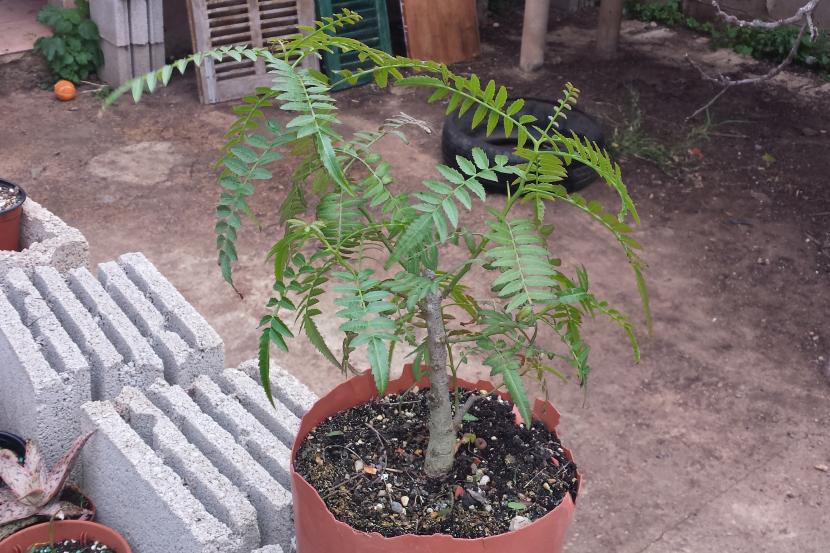
As I anticipated a few days ago in the article of »How do you make a bonsai?», from now on and once a month I will guide you in the design of your future bonsai. I will explain in detail how it is wired, how it is transplanted, and why each of these things have to be done. And, of course, with lots of photos to make it even easier for you.
So if you want to start with me on the road of designing a bonsai, take a pen and paper, and let us begin.
Today, in mid-winter, what we are going to do is the first job, which will be choose the style we want to give and transplant it. But if the cold wave is still very present in your area, it is better to transplant when the temperatures begin to improve.
Tools
The tools we will need are:
- Saw, scissors and hook
- Low pot
- Akadama, a very porous substrate that facilitates rapid water drainage.
- Vermiculite
- Low plastic pot
- Scissors
- A small handsaw
- A hook"
- Healing paste
- Akadama (if you don't have a way to get it, you can use clay pellets or take a broken ceramic pot and »grind» it well)
- Vermiculite (or kiryuzuna, but when it comes to species that do so well where you live, you don't need a special substrate)
- And of course the plant that we want to work
Step 1: choose a style

It's not always easy to choose a styleSince the plants that we find in nurseries and garden centers are pruned thinking that these plants will be in gardens, and not in bonsai pots. With seedlings »raised» by us something similar happens: we usually let the tree grow as it wants for several years until we decide to start working on it. The specimen that I have chosen to make this guide is a Soft tendons seed. He is about three years old, and has been in a corner of a table until now. So at first glance it is not easy to define a design, and it is likely that it will end up changing as you work.
But ... (fortunately there is always a but), It can help us a lot to know the following:
- There can be no branch that grows towards us
- The branches and their leaves, as far as possible, have to form a kind of Y
- There can be no branch that crosses another
- The Classical School tells us that there must be a certain triangularity, on all sides of the tree
Knowing this, in this case I have chosen to follow the style of bonsai with double trunk. That is, one day if everything goes well we will see the Schinus like this:
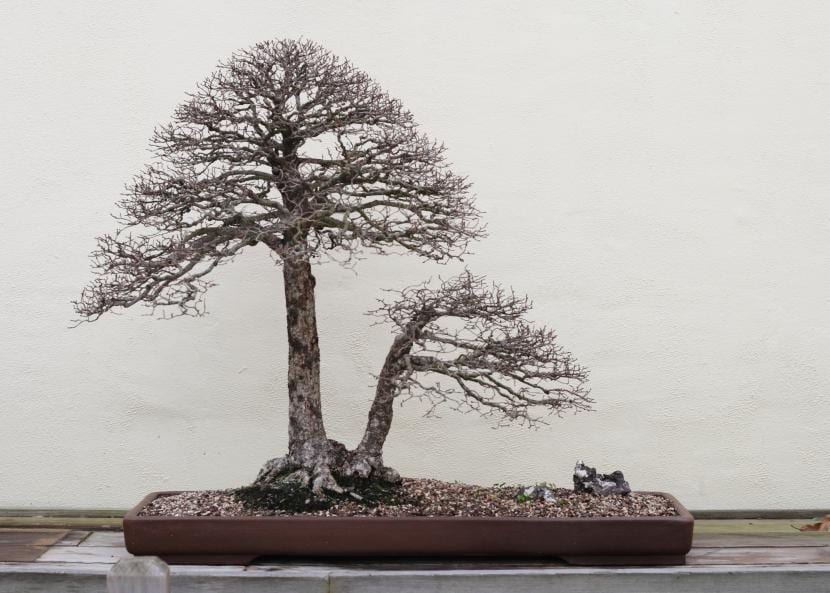
Much work remains to be done! But we must not be in a hurry. Patience must be our companion on this path to do it correctly.
Step 2: first pruning
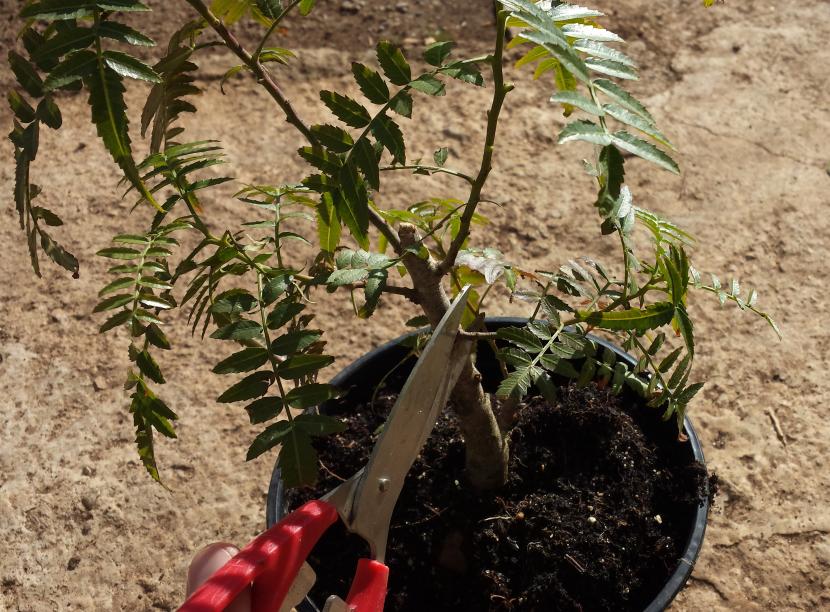
There are several types of pruning: training, maintenance, and sanitation. The Schinus did not have to be done much, in fact, more than a pruning could be considered pinched, since only a few twigs have been removed.
To prune you can do it with scissors if the thickness of the branch (or root) is not too wide, or with a handsaw small. Do not forget to previously disinfect the tools with water and alcohol, and after having used them. It is also important that you put healing paste on each cut, especially if it has been large (like the one seen when pruning a thick branch).
Step 3: Transplant
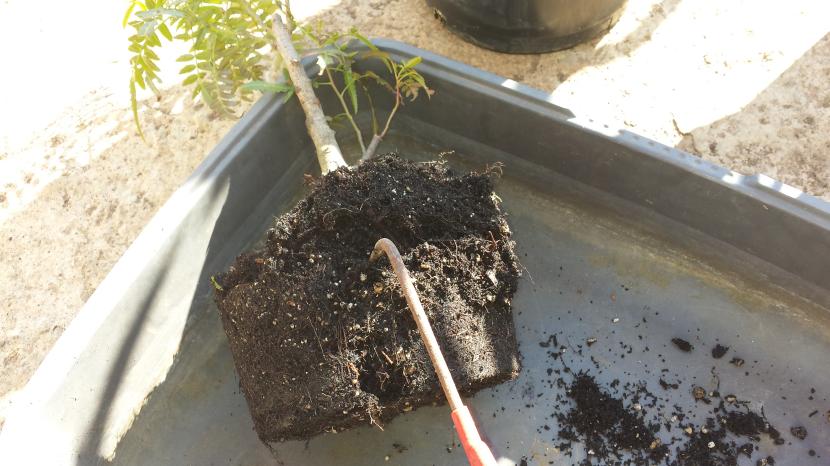
Now the time has come to transplant to our tree. But for this we must first remove the substrate. How do we do it? With the help of a hook. As long as it is a native species or that it lives without problems in our area, we can do this task without worries; carefully, yes, but without having to worry about the »indirect pruning» of roots that we are doing.
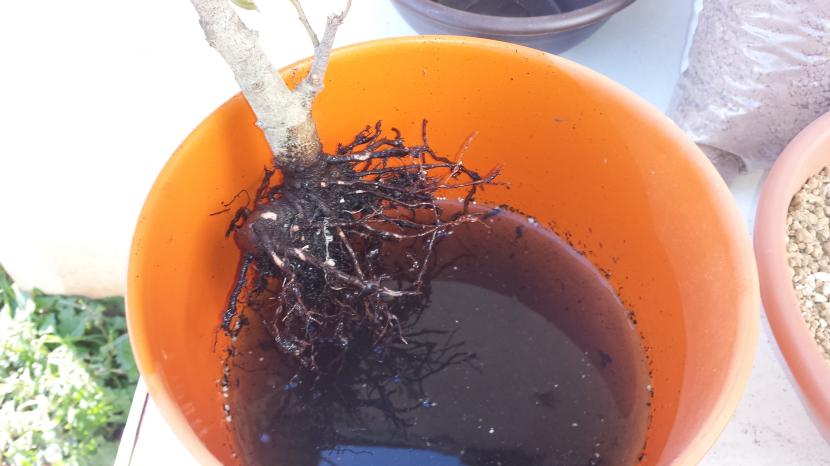
Then we clean the roots with water.
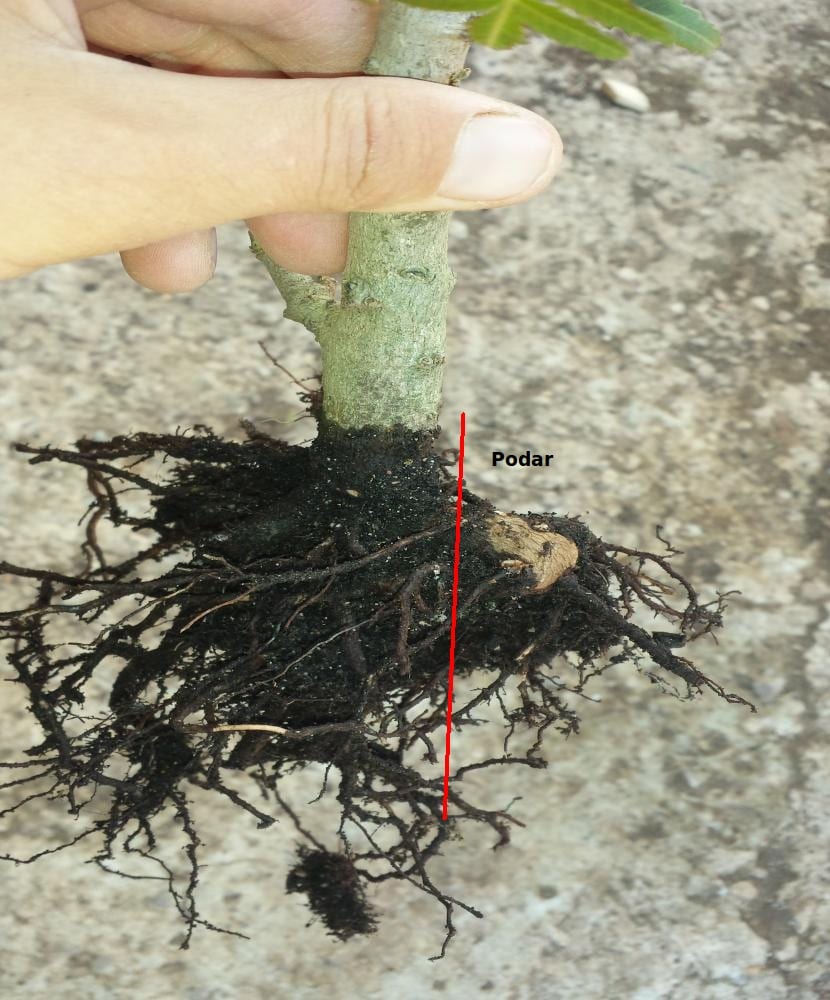
Sometimes unforeseen events arise. We see Schinus a too thick root that needs to be pruned With a handsaw, down the red line
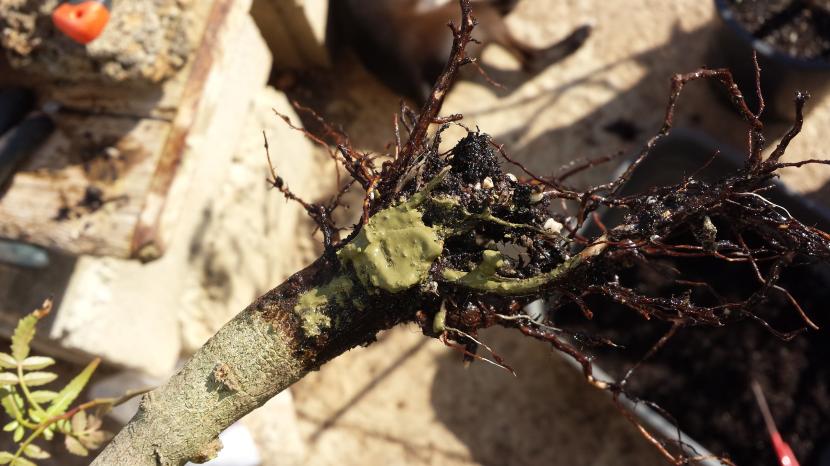
We put healing paste, and we leave it in a bowl with water.
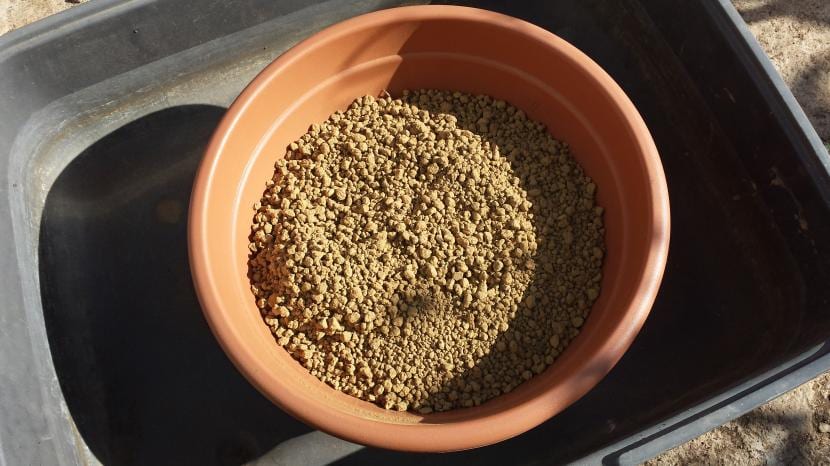
We move on to the substrates. So that we don't make a mistake with the amount of substrate you need, we put the akadama in the pot first, until the pot is almost full. Then, we add a layer of vermiculite.
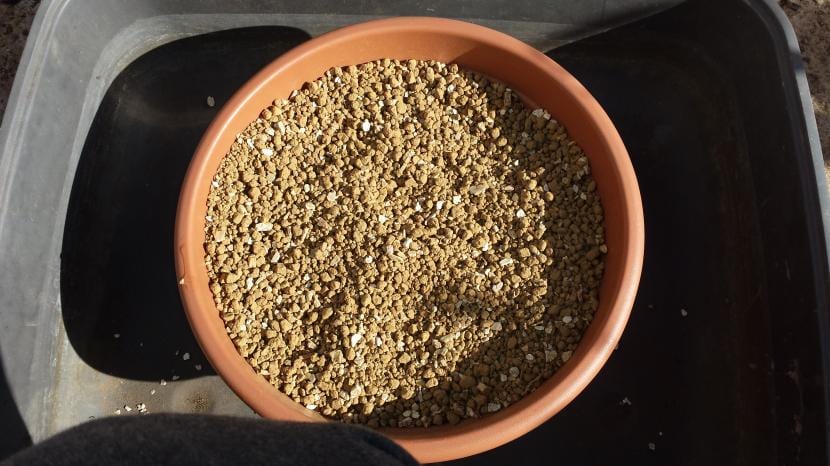
When mixing it, we will have something like this. Ready to plant the tree! If you want, to make it easier to transplant, remove some substrate before putting the plant in, and then reinsert it to finish covering the roots.
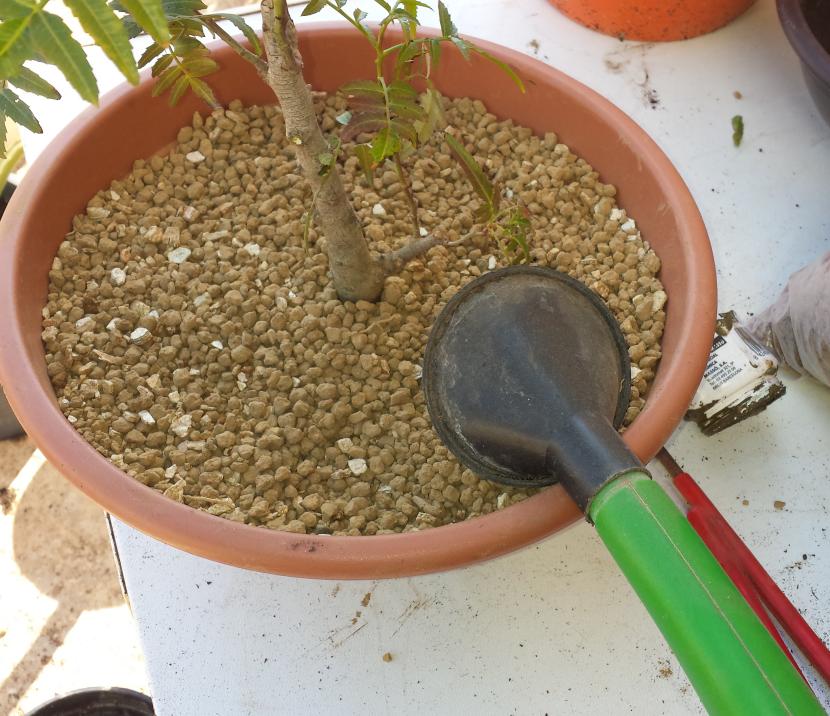
Last we only have to water (with plain water, or by adding a few drops of Benerva, which you will find in pharmacies and will help the roots to recover better from the transplant), and place it in a location protected from direct sun.
And to finish…
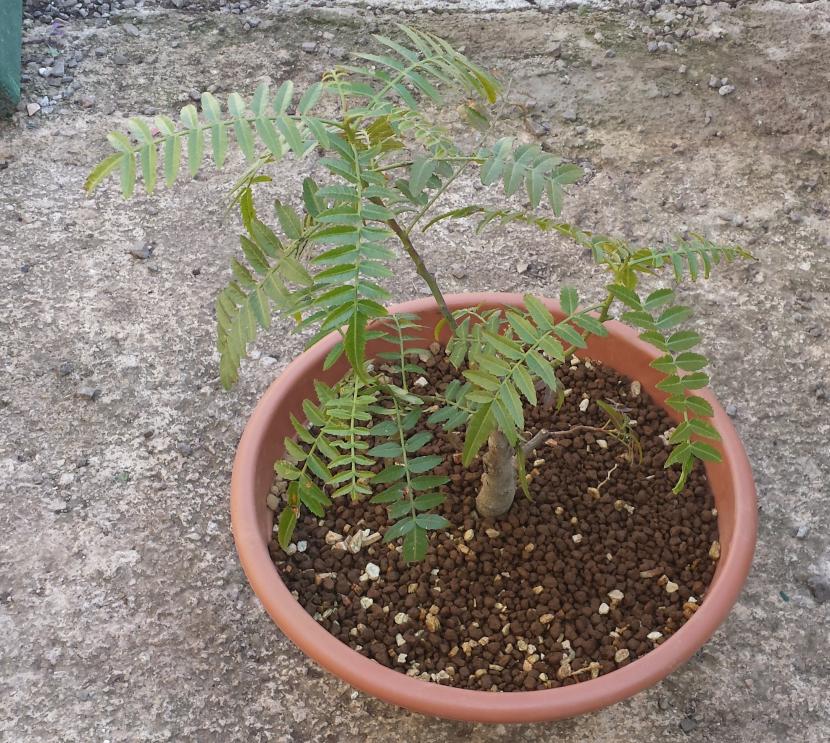
Don't worry if your tree's leaves fall off. It is a very common reaction considering that several roots have been cut when removing the substrate. This is a pre-reaction to the spectacular sprouting that it will do in spring.
In the case of conifers, you should never do an intensive pruning or cleaning of the roots. These plants are supported by mycorrhizae, which are a species of fungus beneficial (and vital) for the survival of these trees.
Next month we will talk about Fertilizers: the food of the tree that will help it to grow in an enviable state of health. But, if you have doubts, do not wait any longer and Contact us.
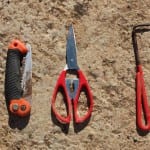
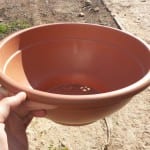

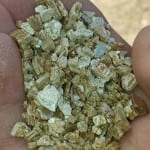
Hello Monica. I am very happy with your advice, I want to make a Flanboyan bonsai, and I would like to know how old the plant has to be to start a greeting Josefa. eschpa@bluewin.ch
Hello Yapote
Did you make a Flamboyant bonsai? I live in UK and sowed 4 seeds in April. Now the plant are quite big.
From Lynn Cardwell
Hi Lynn.
No, I have not made any flamboyant bonsai. Where I live the temperatures are cold in winter for him.
But we have an article on the subject that may help you 🙂: you can do click here.
A greeting.
I'm going to buy a complaint, which plants do you suggest, I live in Peru and tomorrow we will enter Autumn. Thanks in advance.
Hi Bertha.
I think tree cuttings are not usually sold, since they have to be planted as soon as possible (the same day they are taken) so that they do not spoil.
In this article we talk about what are the best bonsai for beginners. But the best thing is that you work with one that is native to your area.
Regards!
Hello yapote!
In reality, the age is not as important as the plant itself. Let me explain: there are trees like the Zelkova or the Ulmus that in a few years you can make a bonsai that appears older than it is. Because of this I like to look at the thickness of the trunk. To start working a tree as a bonsai it is necessary that its trunk measures at least one centimeter in diameter. The ideal would be 2cm, but 1cm is enough to get started.
If you have any further questions, ask 🙂
A greeting!
Monica thanks for the tips. I am an apprentice to bonsai and everything in general. I would like you to explain why from the root cut, it would not be better to leave the thick root ?, and another question. I understand (correct me if I'm wrong, please, now and always, that the tree has to be attached to the pot with wire to prevent the micro-roots from breaking when moving, right? If I'm right, explain how it is held Thank you, and sorry for the grill
Hello Oscar.
Thanks to you 🙂.
The thick root whenever possible is better to cut it, since otherwise the tree would end up coming out of the tray. It should NOT be done if it only has that root, since if it did, the plant would die.
Indeed, it has to be secured with wire. There are several ways to do it. The first thing is to hold the drainage grids, then place the tree -and without substrate-, and put a wire on each side of the plant passing it through the holes in the grid and knotting it at the base. As a picture is better than a thousand words, I leave you a video.
If you have any questions ask.
Thank you very much for the advice dear
Greetings to you.
Hello, good morning, I have seen this article, I have tried to look for the continuation but I cannot find it, I am quite interested in bonsai for molle. Best regards
Hi July.
This little tree was the victim of a dog accident and there was no way to save it.
Anyway, I leave you an article about how to make a bonsai.
If you have any questions, please ask.
A greeting.
Hello I liked the step by step but I have a problem, I am Cuabana and the Alabama and Kiriu are not found, how can I replace them?
Hello Teresa.
Broken pottery or clay pots will do the trick. Of course, the pieces have to be very small, 0,5cm or less.
Another, easier option is to get construction sand. Here in Spain we call it gravel. It is grey. The one that is good for plants is the one with a small grain, 1-3 millimeters.
Regards!
And how long is it sheltered from the direct sun.
Or would it stay like this?
Hi John.
When you see new shoots, you can put it back in the sun, if it is a plant that needs to be exposed to the rays of the sun.
Regards!
Very good explanation for those who want to get into the art of bonsai
Thank you very much Teresa.